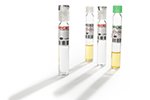-
Products
- Lab Instruments
-
Lab Meters and Probes
Calibration Standards Sension+ Meters and Probes
- Chemistries, Reagents, and Standards
-
Online Analysers
Ammonium Analysers Chlorine DioxideChlorine Analyzers
- CL17sc
- CL10sc Amperometric
- 9184 sc Amperometric
- Ultra Low Range CL17sc Colorimetric Chlorine Analyser
EZ Series Analysers- Iron
- Aluminium
- Manganese
- Phosphate
- Chloride
- Cyanide
- Fluoride
- Sulphate
- Sulphide
- Arsenic
- Chromium
- Copper
- Nickel
- Zinc
- Ammonium
- Total Nitrogen
- Total Phosphorus
- Phenol
- Volatile Fatty Acids
- Alkalinity
- ATP
- Hardness
- Toxicity
- Sample Preconditioning
- Boron
- Colour
- Nitrate
- Nitrite
- Silica
- Hydrogen Peroxide
- EZ Series Reagents
- EZ Series Accessories
- EZ sc Series Inorganics
- EZ sc Series Metals
- EZ sc Series Nutrients
-
Online Sensors and Controllers
Digital Controllers (Transmitters) Controllers (Analogue)
- SC4500
- Orbisphere 366x Ex
- Orbisphere 410/510 Carbon Dioxide
- Orbisphere 410/510 Oxygen
- Orbisphere 410/510 Ozone
- Orbisphere 51x Hydrogen
pH & ORP Sensors- 1200-S ORP
- 1200-S pH
- 12mm pH/ORP
- 8362 sc High Purity
- Combination pH/ORP
- Differential pH
- Digital Differential ORP
- Digital Differential pH
- LCP pH
Conductivity Sensors- 3400 Analogue Contacting
- 3400 Digital Contacting
- 3700 Analogue Inductive
- 3700 Digital Inductive
- 3798 sc Electrodeless
- 9523 Cation Conductivity
- 9525 DCCP System
-
Automated Lab Systems
Automatic Laboratory Analyser
- Samplers
- Test Kits & Strips
-
Microbiology
Prepared MediaKits Labware
- Accessories
- Funnels, Pumps & Manifolds
- Microbiology Filters
- Petri Dishes & Accessories
- Sampling Bags
- Vials, Tubes, Bottles & Racks
-
Lab Equipment and Supply
General Lab Consumables Books and Reference MaterialGlassware/Plasticware InstrumentsSafety Equipment Apparatus
- Claros Water Intelligence System
- Electrochemistry
- Parameters
- Industries
- Brands
- Service
- Support
- News & Events
Water Desalination Processes, Challenges and Solutions
ARTICLE
Learn About the Desalination Process
Humans need clean drinking water. However, with high-quality freshwater sources becoming more challenging to find, some communities are turning to alternative methods — like water desalination processes — to produce drinking water.
Water Desalination Information, Processes, Challenges and Solutions
Read more about what is desalination, source water considerations, desalination methods and much more.
What is Desalination?
Desalination (sometimes called desalting) is the process of reducing or eliminating water’s salt content to make it safe for human consumption.
Desalination facilities typically use this process to remove dissolved salts from seawater, but they may also use it to treat mineralized groundwaters, municipal wastewaters and brackish inland seas (which contain slightly salty waters).
Although desalination focuses on desalting, water desalination plants can use the same technologies to remove most organic chemicals and microbial contaminants from water — whether during the desalting process or in other applications.

Source Water Consideration
Several factors influence how desalination plants determine which source waters to treat, such as:
- The plant's location relative to available water sources
- The source water quality
- The treated water's delivery destination
- Available pretreatment options
- The environmental impacts of treatment
The two most common sources of water desalination plants evaluate are seawater and brackish water.
Seawater Desalination
Seawater has an exceptionally high concentration of live salts, making it more difficult to treat than brackish waters. To remove the salts from the salt water (also referred to as saline water), water quality professionals first measure the concentration of dissolved salt by weight in parts per million (ppm).
Thus, if water has a 10,000ppm concentration, 1% of the water’s weight comes from dissolved salt. By identifying how much salt is present, desalination plants can treat seawater and all saline waters appropriately.
For reference, here are the ppm concentrations of each water source:
- Freshwater - less than 1,000ppm
- Slightly saline (brackish) water - between 1,000ppm and 3,000ppm
- Moderately saline water - between 3,000ppm and 10,000ppm
- Highly saline (ocean) water - between 10,000ppm and 35,000ppm

While desalination can effectively treat seawater and create safe drinking water, it also produces an environmentally harmful by-product called brine — a highly concentrated solution of salts and contaminants.
Disposal of Brine
Many desalination plants dispose of brine by dumping it back into the sea, a process that requires costly pumping systems and can damage marine ecosystems. A more environmentally friendly alternative is to turn brine into valuable chemicals like sodium hydroxide.
Water desalination facilities can use this chemical to pretreat saline water, resulting in a process that's not only safer for the environment but also more efficient and cost-effective.
Brackish Water Desalination
Though brackish water is significantly less salty than seawater, desalination plants still need to treat it to make it safe for human consumption. Commonly found in inland seas, brackish water occurs when groundwater and seawater mix in deep fossil aquifers. As precipitation seeps in over time, the salt from mineral deposits dissolves and produces salty water.
Traditionally, communities have undervalued and underutilized brackish water. However, with modern desalination processes and the depletion of freshwater sources, water quality professionals are looking to it more and more as a source for generating drinking water. Because it’s less salty than seawater, brackish water is easier and cheaper to desalinate.
Desalination Methods
When implementing a water desalination process, facilities essentially have two types of technologies to choose from:
Thermal desalination
Thermal desalination methods (also known as solar humidification or distillation) use heat to change salt water into a vapor generally free of salt, minerals, and other contaminants, collecting the condensation in a trough.
However, most communities rarely use these methods because they require large land areas and ample energy to pump the water, making them ideal for countries in the Middle East that can use waste heat from oil refineries as energy.
Membrane desalination
For the rest of the world, membrane desalination processes can be the more cost-effective option. These methods use a physical barrier and a driving force — electricity or pressure — to filter salt molecules. The most widespread process for desalination is a membrane technology called reverse osmosis (RO).
Using high pressure, reverse osmosis forces saltwater against a semipermeable membrane, allowing only fresh water to pass through and leave concentrated mineral salts behind.
Whether a desalination plant implements a thermal or membrane process, both can be highly effective methods for making saline water safe for human consumption.
Four Methods of Thermal Desalination
Thermal desalination methods require multiple steps and generally consume more energy and costs than membrane processes.
The four methods of thermal desalination are:
- Multistage flash distillation (MSF)
- Multi-effect distillation (MED)
- Vapor compression distillation (VCD)
- Solar distillation
1. Multi-Stage Flash Distillation
In multi-stage flash distillation (MSF), a desalination plant sends saline feed water through numerous chambers. The system progressively heats and boils the water through flash evaporation to produce vapor (freshwater). The system then condenses and collects the freshwater vapor.
2. Multi-Effect Distillation
Like an MSF, a multi-effect distillation (MED) plant uses multiple stages or effects to heat and boil saline water. However, each chamber has its own vessel instead of numerous chambers in one vessel. This construction allows an MED to evaporate saline water through direct contact with a heat transfer surface instead of flash evaporation.
3. Vapor Compression Distillation
Unlike MSFs and MEDs, vapor compression distillation (VCD) plants don't have multiple chambers. These systems evaporate saline feed water by using heat from vapor compression. VCDs can function independently or water desalination plants can use them with another thermal distillation process.
4. Solar Distillation
Although the design of solar distillation systems can vary, the basic structure is the same. This system uses the sun’s energy to evaporate saline water. The resulting vapor condenses on a clear glass or plastic covering and ultimately collects in a freshwater trough.
Membrane Desalination
There are four main types of membrane desalination — that is, where a semipermeable membrane removes salt and minerals from saline water.
The four membrane desalination methods include:
1. Reverse Osmosis (RO)
As previously mentioned, RO is the most popular desalination method. An RO system uses pressure to force saline water through a membrane that rejects salts and other dissolved minerals. The pressure required for RO differs based on the water’s salinity, so seawater requires higher pressure than brackish water in this process.
2. Electrodialysis
Like RO, electrodialysis (ED) uses a pressure-driven pump to push water through semipermeable membranes. However, unlike RO, ED uses selective membranes that allow only positively or negatively charged ions to pass through. This filtration breaks apart the ionic molecules in saline water, producing fresh water on the other side of the membrane.
While this process is more expensive to install than RO, it’s more resistant to membrane deterioration, so you can avoid the maintenance and replacement costs that you might get with RO.
3. Nanofiltration
Water quality engineers developed nanofiltration (NF) primarily for drinking water applications because it allows beneficial minerals found in water to pass through the membrane, which RO can't do. NF membranes can remove particles as small as 0.001 microns, including dissolved salts and minerals, sugars, bacterial and viral pathogens, biological matter, metal ions, latex and oil emulsions, carbon, proteins or enzymes.
4. Ultrafiltration
Some parts of the world can be challenging for RO desalination. For example, the Persian Gulf waters are relatively shallow, high in temperature and have many islands off the coast, hindering efficient evaporation. As a result, the seawater that reaches desalination plants has high salinity and organic content, posing a significant risk of fouling or damaging RO membranes.
For efficient desalination of those waters, it's critical to pretreat the seawater using ultrafiltration (UF). This pretreatment method separates microscopic solids from soluble compounds using pressure and ultrafine membrane media.
Additionally, the use of ultrafiltration membrane technologies for desalination is crucial for converting treated municipal or industrial wastewater treatment plant effluent into a useful water stream for reuse purposes (e.g., irrigation, cleaning water, service water and cooling water).
Day-to-Day Monitoring of Desalination
Desalination plants are continuously trying to improve performance or efficiency.
One of the major operational issues of desalination facilities involves day-to-day monitoring of the complete process and careful preventive maintenance.
Hach designs and builds a full range of online water analyzers that can help achieve process transparency throughout the desalination process, particularly for the desalination of seawater and brackish water by reverse osmosis.

As water quality experts, Hach offers a comprehensive process and lab analysis portfolio including services for desalination.
We can help you with many of the challenges you may find in your desalination process such as:
- Uncontrolled deposition
- Clogging, organic or biofouling of membrane oxidation by chlorine
- Helping to make sure you get the optimum and disinfected drinking water quality
- Supplying the right solutions to provide remote monitoring
Our aim is to support you by offering professional technical support and service teams that will help you during all the steps of your process, to get the best results.
Find out More
- For more information, fill out our Request for Quote form
- Or refer to our desalination applications here





